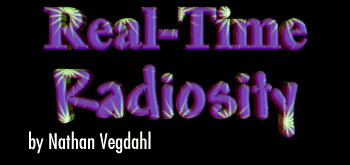11/10 - 11/12 @ Montréal, Canada
12/5 - 12/7 @ Shanghai, China
12/24 - 12/27
2/28 - 3/4 @ San Francisco, CA
More events...
2406 articles in the reference section.
Help us fight cancer!
Join SETI Team GDNet!

|
Basic outline of radiosity mappingThis last section is a quick list of all of the steps in radiosity mapping.
OptimizationsThere are some rather obvious optimizations that could be implemented along with this radiosity method. I am going to lightly outline the ones that I have thought of in this section. The first one is to not do full texture mapping for the cube view. Instead, only find the light values for each vertex in the mesh, and then interpolate. The second one is that you could ignore the radiosity calculation of static objects, and only do radiosity mapping for dynamic objects. You could pre-calculate the radiosity for static objects by using traditional methods. Then, for the dynamic objects light contribution to the static objects, you could pre-calculate a volume of light-contribution values that moved with the object. Then, as the light of one part of the dynamic object changes, so does the corresponding section of volume. The volume would move with the object. Then, you light the static objects according to the light volumes of the dynamic objects.
|
|
|
|
|